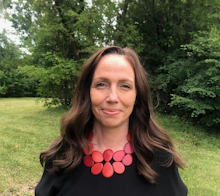Second Life was implemented into two sections of the same course, Communication Technology, in both a fully online section of the course and a blended section of the course as 1.) the object of students’ research and 2.) the environment in which the students conducted their research. Faculty needs, student support, and evaluation of effectiveness will be addressed.
This implementation is part of a larger grant project at the University of Wisconsin-Milwaukee. Here is some background:
Virtual worlds, such as Second Life, have the potential to engage and motivate students by providing an alternative platform for learning where they can construct knowledge through observation, discourse, construction, and interaction. Virtual worlds are noted for their ability to engage students through their 3D environments. They also provide a stage for students to share their work products through an immersive, synchronous medium.
Second Life is a platform that students and faculty access through a software download. The software provides access to a virtual space through a network where people can connect with other people. The virtual platform consists of virtual places, islands and sims, where students congregate, share, communicate, and perform.
These islands and sims can have virtual locations, such as classrooms, meeting rooms, lecture halls, auditoriums, amphitheaters, galleries, exhibit halls, theaters, labs, medical facilities, and outdoor spots. Students enter the world as avatars, or digital representations of themselves, which are customizable to represent the students own identity.
The potential for transforming learning from a didactic process utilizing a lean medium into a stimulating, thought-provoking, and media rich setting is great. Second Life can engage the attention of students, make them active participants in their learning, and provide them the opportunity to enhance not only their cognitive skills, but also the behavioral and affective abilities, for real world learning in a virtual world. Further, students can use Second Life as a place to share their constructed projects with others in their class, on campus, or in the community.
The Second Life project involves faculty from various disciplines, including Anthropology, Architecture, Communication, English, Film, and Continuing Education, from the University of Wisconsin-Milwaukee and is designed to learn how instructors can use Second Life, a virtual world, in their course in order to actively engage students and facilitate student learning. Faculty members will redesign their courses in order to integrate learning activities that use Second Life.
The impact of these activities on teaching and learning will be assessed and "best practices" will be distilled and shared with the other faculty on the UW-Milwaukee campus and across the University of Wisconsin System through a web repository.
Visit: http://www.uwm.edu/Dept/LTC/sl.html for more information on the grant project.


No comments:
Post a Comment